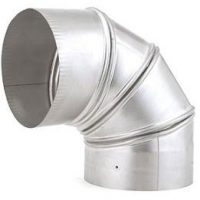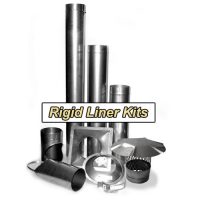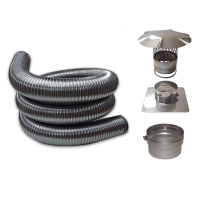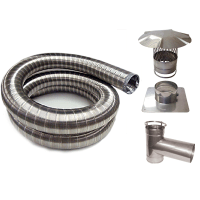10 Fireplace Smoking Problems and Solutions
by: Rick Pocock
There is nothing worse than coming in after a hard day and when you finally get a decent fire going, all you get is a fireplace smoking back into the room. It burns the eyes and lungs, and you wind up having to open windows and doors to let the cold air in to air the room out. That smell gets into all of the fabrics in the house as well as in your clothes, and it seems to take forever to get rid of it.
Many of the common smoking problems deal with the fact that a fire needs to be supplied with a large amount of make up air as one of its three primary elements, as well as needing to have an adequate opening through the chimney to the outside in order to exhaust out the smoke and gases so that they don’t come back into the room. Below is a list of the top ten possible reasons and their solutions as to why you’re having that smoking problem.
1) Dirty or Obstructed Chimney– Have the chimney inspected and swept by a Certified Chimney Sweep so that the chimney can be checked for any obstructions such as a bird’s nest or tree branches, or your kid’s missing volley ball. Also, a dirty chimney cap will prevent smoke from freely exiting the chimney.
2) Closed Damper– Before starting a fire, always check to make sure that the damper is completely open. If you’re not sure, shine a flashlight up the chimney to see if the metal damper plate is open or closed.
3) Fuel– Cut firewood must be aged a minimum of one year. It should be kept dry and protected from the rain. If the log is larger around than 6″ in diameter, it should be split so that it burns efficiently. Also, some types of prefabricated “paper wrapped” logs can be prone to smoking.
4) Fire Grate Placement– The fire grate is where you place your wood in the firebox and should be placed as far back in the firebox as possible, preferably right against the backwall in order to create a good draw. Sometimes it’s necessary to raise the grate with bricks to help. This gets more air under the grate for better circulation and it also raises the height of the fire.
5) Chimney Not Built To Proper Dimensions-Many times the fireplace opening is too large or too tall, especially in relation to the chimney flue size. This can give smoke a choice of going up the chimney or coming into the room. The solution could be adding a metal smoke guard to the top of the fireplace opening, since it shrinks the size of the opening. Also, many two-sided fireplaces have inherent smoking problems due to their sensitivity to air drafts in the house. In this case you might think about installing glass doors. One more thing, if the chimney does not have adequate height, you may need to extend the height of the chimney to improve the draw.
6) Cold Weather– If the weather outside the house is either colder and/or raining, the air inside the chimney flue will be cold and heavy and block the smoke from venting out. In this case, it helps to ‘prime’ the chimney by rolling up a newspaper and lighting it, then hold the lit end close to the open damper inside the firebox for a minute or two to warm up the heavy air in the flue. Then you can light the fire and ideally should have a good draw.
7) The House Is Near a Canyon or Hillside– If the house is next to a canyon, hillside or slope, it can have smoking problems due to wind currents and downdrafts. The air is pushed down the chimney into the room. Many times a specially designed chimney wind cap will resolve this problem since the top part of it turns like a weather vane and the cap’s backside creates a barrier in the way of the wind.
8) Central Heating System– If the heater is on, you will lose the draw from the chimney which will cause a smoking problem. This is because the central air furnace is so strong that even if the air intake vent for the central heating system is not in the same room as the fireplace, it will suck the outside air down the chimney and will cause the fireplace to smoke when the fire is going. Do not run the heater when the fireplace is in use!
9) Air Pressure Difference– Because houses are built much tighter than they used to be, the air pressure inside the house can be different than outside the house and this will not allow for a proper draw of air through the flue as well as the fire not receiving adequate make up air. This will also happen if a house is retrofitted with new tighter windows and doors. To minimize the smoking problem, crack open a window or door (preferably at the same level as the fireplace) in the room.
10) Tall Trees and Buildings– A tall tree or added-on second story (yours or your neighbor’s) close to the chimney may change the wind currents and cause down drafts to go down through the chimney and not only cause a smoking problem but possibly an odor problem as well. Keep those trees trimmed! With the 2nd story problem, the solution will likely be to raise the chimney height, but in some cases the wind cap might help instead.
These at least hit the highlights of what could be the problem when dealing with that annoying smoking problem. There are other possible reasons for this problem, so if following the corrective actions presented here don’t take care of it, the best advice I could give would be to contact a CSIA Certified Chimney Sweep in your area and put him to work figuring it out. Good Luck!






